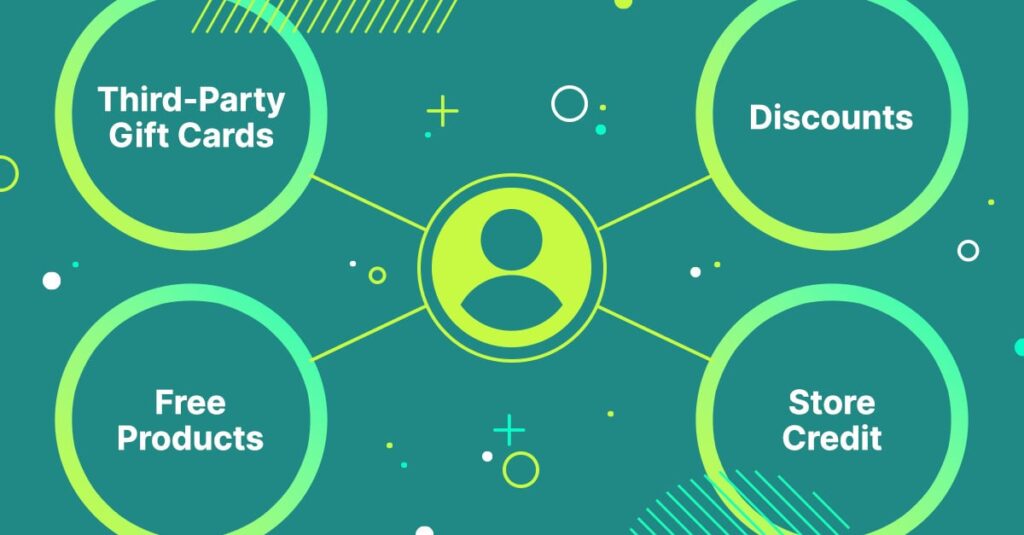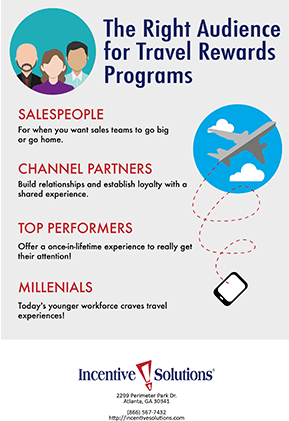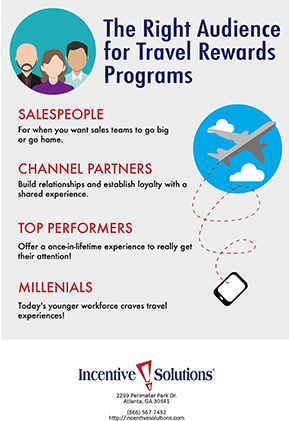So, you’ve got a target audience, and you want to choose the perfect incentive to engage and motivate them. But where do you start? Well, fear not! In this article, we’ll explore some key strategies and considerations to help you navigate the exciting journey of selecting the right incentive for your desired audience. Whether you’re looking to boost sales, increase customer loyalty, or simply create a buzz around your brand, we’ve got you covered. So, let’s dive in and discover how you can captivate your target audience and make them say, “Yes, that’s exactly what I needed!”
Understanding Your Target Audience
To effectively choose the right incentive for your target audience, it is crucial to have a deep understanding of who they are. Identifying the demographics of your audience is the first step in this process. Age, gender, location, occupation, and income level are some common demographics that can give you insights into your target audience.
Analyzing their interests and motivations is equally important. What are their hobbies, passions, and values? What are their goals and aspirations? Understanding what drives your audience can help you align your incentives with their desires and create a more compelling offer.
Another key aspect to consider is their needs and pain points. What challenges do they face in their daily lives? What are their priorities and desires? By identifying their needs, you can tailor your incentives to address those specific pain points, making your offer even more enticing.
Types of Incentives
There are various types of incentives you can consider when designing your program. Each type has its own benefits and appeals to different segments of your target audience. Here are some common incentives to explore:
Discounts and Offers
Offering discounts or special offers can be an effective way to attract price-sensitive customers. By providing a discounted price or a limited-time offer, you create a sense of urgency and encourage immediate action from your audience.
Freebies and Giveaways
Everyone loves getting something for free. Offering freebies or giveaways can help generate excitement and increase brand loyalty. Whether it’s a free sample, a complimentary gift, or a chance to win a prize, freebies can be a powerful incentive to engage your audience.
Exclusive Access or Privileges
Giving your audience exclusive access or privileges can create a sense of exclusivity and make them feel special. This can include VIP treatment, early access to new products or services, or access to exclusive events or content.
Loyalty Programs
Loyalty programs are designed to reward repeat customers and encourage ongoing engagement. By offering points, rewards, or discounts based on their past purchases, you incentivize your audience to continue doing business with you.
Contests and Competitions
Contests and competitions can be highly engaging and encourage audience participation. Whether it’s a photo contest, a trivia challenge, or a creative competition, these incentives can spark excitement and generate buzz around your brand.
Referral Rewards
Word-of-mouth marketing is powerful, and referral programs can leverage this by incentivizing your audience to refer their friends or family. By offering rewards for successful referrals, you can tap into the network of your existing customers and attract new ones.
Charitable Contributions
Aligning your incentives with a cause or supporting a charity can create a positive image for your brand. By involving your audience in charitable contributions or donating a portion of your sales to a specific cause, you not only incentivize them to participate but also contribute to a greater good.
Personalized Gifts
Personalization adds a special touch to your incentives. By offering personalized gifts or experiences, you make your audience feel valued and appreciated. This can range from customized products to tailored experiences based on their preferences and interests.
Education and Training Opportunities
Providing educational resources, workshops, or training opportunities can be a valuable incentive, particularly for audiences seeking personal or professional development. By offering knowledge and skills, you position yourself as an expert in your field while empowering your audience.

This image is property of extu.com.
Aligning Incentives with Audience Preferences
To ensure the effectiveness of your incentives, it is crucial to align them with your audience’s preferences. This requires conducting thorough market research and understanding their behavior, preferences, and expectations. Here are some strategies to help you align your incentives with your audience preferences:
Conducting Market Research
Market research involves gathering insights about your target audience, competitors, and industry trends. By studying consumer behavior, preferences, and purchasing patterns, you can identify what incentives are most likely to resonate with your audience.
Surveys and Feedback Collection
Directly engaging with your audience through surveys and feedback collection can provide valuable insights. By asking them about their preferences, interests, and motivations, you can collect data that helps you tailor your incentives to their specific needs.
Analyzing Competitor Strategies
Analyzing your competitors’ strategies can give you a sense of what incentives are effective in your industry. By understanding what your competitors are offering and how they are positioning their incentives, you can find ways to differentiate yourself and offer unique value to your audience.
Segmenting Your Target Audience
Segmenting your target audience allows you to create incentives that are tailored to specific groups with different preferences and needs. By dividing your audience into segments based on demographics, behavior, or psychographics, you can develop incentives that resonate with each group individually.
Setting Clear Objectives
Before implementing your incentive program, it is essential to set clear objectives. What do you want to achieve through your incentives? Here are some common objectives to consider:
Increasing Sales and Revenue
One of the primary objectives of many incentive programs is to drive sales and increase revenue. By offering incentives that motivate customers to make a purchase or increase the value of their purchase, you can directly impact your bottom line.
Building Customer Loyalty
Building customer loyalty is crucial for long-term success. Incentive programs that reward repeat purchases, engagement, and advocacy can help foster customer loyalty and turn them into brand advocates.
Attracting New Customers
Incentives can be effective in attracting new customers, particularly if you offer a compelling offer for first-time buyers or referrals. By targeting new segments or markets with personalized incentives, you can expand your customer base.
Boosting Social Media Engagement
Social media engagement can be a powerful tool for brand awareness and customer interaction. Incentives that encourage customers to follow, share, or engage with your social media channels can help boost your online presence and increase brand visibility.
Fostering Customer Advocacy
Incentives that motivate customers to become brand advocates can have a significant impact on your reputation and word-of-mouth marketing. By incentivizing them to leave reviews, referrals, or testimonials, you can leverage their positive experiences to attract new customers.
Promoting Brand Awareness and Recognition
Incentives can also help increase brand awareness and recognition. By offering incentives that align with your brand values and evoke positive emotions, you can create a memorable experience that resonates with your audience and elevates your brand image.

This image is property of www.friendbuy.com.
Budget Considerations
When planning your incentive program, it is crucial to consider your budget. Here are some factors to consider:
Determining Available Resources
Take stock of your available resources, including financial resources, personnel, and technological capabilities. This will help you understand the limitations and opportunities when designing your incentive program.
Calculating Return on Investment (ROI)
Estimating the return on investment (ROI) of your incentive program is essential to ensure that the benefits outweigh the costs. Consider the potential increase in sales, customer lifetime value, and brand reputation when evaluating the ROI.
Estimating Costs of Incentive Implementation
Consider the costs associated with implementing and managing your incentive program. This can include the expenses related to creating and fulfilling incentives, promoting the program, and tracking performance.
Creating an Effective Incentive Program
To create an effective incentive program, you need to carefully plan and design the structure and mechanics. Here are some steps to help you create an appealing program:
Defining Program Goals and Targets
Clearly define the objectives and goals of your incentive program. Specify what actions or behaviors you want to incentivize and what outcomes you hope to achieve.
Designing an Appealing Incentive Structure
Design an incentive structure that is appealing and aligns with your audience’s preferences. Consider the types of incentives that will motivate them and the mechanics of how they can earn or redeem these incentives.
Setting Achievable Milestones
Break down your program into achievable milestones or tiers. This can create a sense of progression and keep your audience engaged and motivated throughout their journey.
Establishing Clear Terms and Conditions
Clearly communicate the terms and conditions of your incentive program to avoid any confusion or misunderstandings. Make sure your audience understands how they can participate, earn incentives, and redeem them.
Promoting the Incentive Program
Promote your incentive program through various marketing channels to maximize its visibility and reach. Utilize social media, email marketing, website banners, and in-store signage to create awareness and encourage participation.
Testing and Measuring Incentive Performance
To evaluate the effectiveness of your incentive program, it is essential to test and measure its performance. Here are some strategies to help you assess its impact:
Conducting A/B Testing
A/B testing involves comparing two versions of your incentive program to determine which performs better. By testing different incentives, messaging, or mechanics, you can identify the most effective approach.
Tracking Key Performance Indicators (KPIs)
Select key performance indicators (KPIs) relevant to your program’s goals and track them regularly. This can include sales revenue, customer acquisition, engagement metrics, conversion rates, and customer satisfaction.
Collecting Customer Feedback
Gather feedback from your audience to gain insights into their experience with your incentives. Surveys, focus groups, or customer reviews can provide valuable feedback that helps you refine and improve your program.
Analyzing Conversion Rates
Analyze the conversion rates of your incentive program to determine its effectiveness in driving desired actions. Whether it’s website conversions, email sign-ups, or purchases, tracking conversion rates can provide valuable insights.
Evaluating and Adjusting the Incentive Strategy
Regular evaluation and adjustment of your incentive strategy are essential to optimize its effectiveness. Here are some steps to follow:
Reviewing Results and Outcomes
Review the results and outcomes of your incentive program against the defined objectives. Assess whether you have achieved your goals and if the program has had a positive impact on your business.
Identifying Areas for Improvement
Identify any areas for improvement based on the feedback and data collected. Look for patterns or trends that highlight potential weaknesses or missed opportunities.
Making Data-Driven Adjustments
Use the insights from your evaluation to make data-driven adjustments to your incentive program. This could involve changing the types of incentives, adjusting the program mechanics, or refining your messaging to better meet the needs of your audience.
Seeking Expert Advice or Consultation
If you are struggling to optimize your incentive program, consider seeking expert advice or consultation. Industry professionals or consultants can provide valuable insights and recommendations based on their expertise.

This image is property of incentivesolutions.com.
Avoiding Pitfalls and Common Mistakes
To ensure the success of your incentive program, it’s important to avoid common pitfalls and mistakes. Here are some pitfalls to watch out for:
Using Generic or Irrelevant Incentives
Avoid offering generic or irrelevant incentives that do not resonate with your audience. Tailor your incentives to their specific preferences, interests, and needs to make them more compelling.
Failing to Tailor Incentives to Different Segments
Segment your audience and tailor your incentives to each group’s preferences and needs. One size does not fit all, and personalizing your incentives can significantly improve their effectiveness.
Overpromising and Underdelivering
Avoid the temptation to overpromise and underdeliver with your incentives. Be realistic in what you can offer and ensure that you can fulfill your promises. Failing to do so can damage your brand reputation and customer trust.
Neglecting to Track and Analyze Data
Regularly track and analyze data related to your incentive program to measure its performance and identify areas for improvement. Neglecting this step can lead to missed opportunities and ineffective strategies.
Not Maintaining Consistency in Incentive Programs
Maintain consistency in your incentive programs to avoid confusion and ensure a seamless experience for your audience. Consistency in your branding, messaging, and mechanics helps build trust and familiarity.
Ethical Considerations
When designing your incentive program, it is important to consider ethical considerations. Here are some key points to keep in mind:
Ensuring Transparency and Honesty
Be transparent and honest with your audience about the terms and conditions, limitations, and fulfillment of your incentives. Clear communication builds trust and credibility with your audience.
Respecting Privacy and Data Protection
Handle your audience’s personal information and data with care, ensuring compliance with privacy regulations. Obtain consent for data collection and use, and protect their information from unauthorized access.
Avoiding Manipulation or Coercion
Avoid using manipulative or coercive tactics to drive participation in your incentive program. Incentives should be genuinely appealing and motivate your audience through positive reinforcement rather than manipulation.
Aligning Incentives with Company Values
Ensure that the incentives you offer align with your company’s values and mission. Avoid incentives that may conflict with your ethical standards or compromise your brand integrity.
Choosing the right incentive for your target audience requires a comprehensive understanding of their demographics, interests, needs, and motivations. By aligning your incentives with their preferences and tailoring them to different segments, you can create a program that effectively engages and motivates your audience. Setting clear objectives, considering your budget, and regularly evaluating and adjusting your strategy are crucial steps to drive the success of your incentive program. By avoiding common pitfalls and adhering to ethical considerations, you can build a program that not only attracts and retains customers but also enhances your brand reputation and fosters long-term loyalty.

This image is property of incentivesolutions.com.


